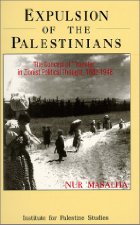Well this is bizarre. I find myself in agreement with a very substantial bulk of a recent article by Jim West at The Bible and Interpretation, “A (Very, Very) Short History of Minimalism: From The Chronicler to the Present.” Jim West argues that biblical studies of the history of early Christianity are largely circular, following the same flawed methodology that lay at the heart of the Albrightian approach to the history of Israel.
Jim West sums up so much of what I have been attempting to argue for some time now:
Most “histories” of Ancient Israel and Earliest Christianity are simply examples of circular reasoning. Many historians use the Bible as a historical source; they reconstruct a history which is often nothing more than a recapitulation of the biblical telling; and the Bible is affirmed as historical because of the history so constructed. Similarly, the life of Jesus, for instance, is gleaned from a reading of the Gospels. Said reconstruction is named a ‘history of Jesus’ life.” That “history of Jesus’ life” is then utilized to prove historically the life of Jesus as described in the Gospels. One need only pick up John Bright’s “History of Israel” or Joseph Ratzinger’s “Jesus” to see circularity in action. True, ancillary materials are added to these histories (on the very rare occasions that they are available)- but these only reinforce the circularly circumscribed reconstruction.
What can I say? Will Crossley, McGrath and others tell Jim this is “bloody weird” stuff and arguing “like a creationist”? It’s what Thomas L. Thompson has said, and Robert M. Price, and I have quoted the same understanding in publications dating back a century to E. Schwartz and Albert Schweitzer. It is where biblical historians differ from nonbiblical historians.
So what’s the catch? Continue reading “The Refreshing Honesty of Jim West”

